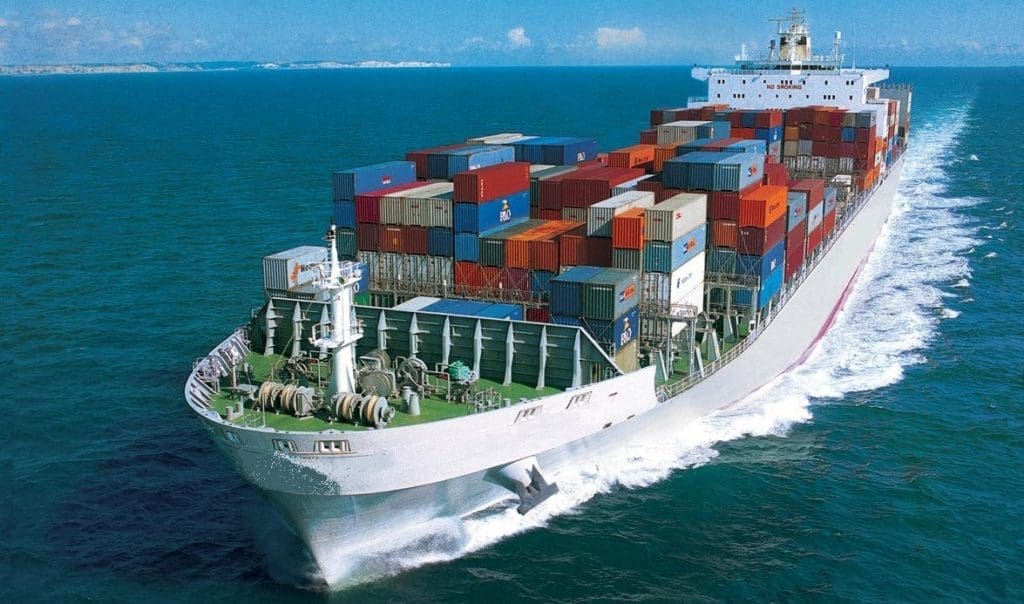
Shipping Containers in Disaster Relief: How Quick Deployment Can Save Lives
When disaster strikes, the speed at which aid and shelter are provided can mean the difference between life and death. Traditional relief structures can take significant time and resources to construct. However, shipping containers have emerged as a critical resource in disaster relief efforts due to their robustness, modularity, and ease of deployment. This blog explores how shipping containers are being utilized in disaster relief scenarios and why they are an effective solution for rapid response.
The Advantages of Shipping Containers in Disaster Relief
Shipping containers have become an indispensable tool in the realm of disaster relief due to their structural integrity, versatility, and ease of modification. Their deployment can significantly enhance the effectiveness of response efforts in disaster-stricken areas. Here, we delve deeper into each advantage that makes shipping containers uniquely suited for such critical roles.
Rapid Response and Mobility
One of the foremost benefits of using shipping containers in disaster relief is their ability to facilitate a rapid response. Containers can be pre-packed with essential supplies like food, water, medical kits, and basic shelter materials. This readiness allows them to be dispatched immediately after a disaster strikes, significantly reducing the lead time required to deliver aid. Additionally, the global availability of shipping containers and their compatibility with existing transportation infrastructure (ships, rail, and trucks) makes them highly mobile and easy to distribute to various geographic locations swiftly.
Structural Robustness and Security
Shipping containers are designed to endure harsh marine environments, which make them exceptionally durable and robust for disaster scenarios. Their steel construction offers substantial protection from environmental elements, debris, and even minor seismic activities, which are crucial in maintaining the integrity of the shelter and safety of the occupants. Furthermore, containers can be securely locked, protecting medical supplies, food, and other sensitive materials from theft or tampering in chaotic post-disaster settings.
Configurability and Scalability
The modularity of shipping containers allows for a high degree of configurability and scalability in disaster relief operations. They can be used singly for smaller-scale responses or combined and stacked to form larger complex structures such as emergency housing units, schools, community centers, or hospitals. This scalability makes them an excellent resource for adapting to the changing needs of a disaster recovery phase.

Cost-Effectiveness
While the upfront cost of acquiring and transporting shipping containers may be considerable, their reusability offers long-term cost-effectiveness that is hard to match with traditional building materials. Once no longer needed at one disaster site, they can be repurposed and relocated to another site, or used in non-emergency contexts such as affordable housing or community buildings. This multi-use capability not only justifies the initial investment but also contributes to more sustainable disaster response practices.
Ease of Customization
Shipping containers are essentially blank slates that can be easily converted into a variety of uses. They can be outfitted with insulation, ventilation, windows, and doors without requiring complex engineering processes. For disaster relief, containers can be quickly transformed into livable spaces with functional amenities such as beds, kitchens, and bathrooms. For medical uses, containers can be equipped with sanitation facilities, refrigeration for storing medicines, and areas for patient care.
Environmental Considerations
Using shipping containers for disaster relief also aligns with environmental sustainability goals. Repurposing used shipping containers reduces waste and demands for new materials. Furthermore, because containers are durable and require minimal maintenance, their lifecycle carbon footprint is reduced. This sustainable aspect is increasingly important as global attention turns towards greener disaster response methods.
Challenges to Consider
Despite their many advantages, deploying shipping containers in disaster relief does present challenges. These include the need for heavy machinery to place and install them, the requirement for technical skills to modify them properly, and the potential for heat buildup inside metal containers in hot climates, which must be mitigated with adequate insulation and air conditioning.


Real-World Applications of Shipping Containers in Disaster Relief
Shipping containers have been used in a variety of innovative ways to provide immediate relief and long-term support in disaster-stricken areas around the world. Their adaptability and durability make them ideal for numerous applications, from emergency shelters to complex medical facilities. Now we will explore several real-world applications where shipping containers have made a significant impact in disaster relief efforts.
Emergency Housing Solutions
In the aftermath of disasters such as earthquakes, hurricanes, or floods, one of the most urgent needs is for safe, temporary housing for displaced populations. Shipping containers have been effectively converted into emergency housing units due to their robust structure and ease of deployment. For example, after the 2011 earthquake and tsunami in Japan, shipping containers were rapidly converted into residential living spaces for those who lost their homes. These container homes can be set up in days and are designed to last long enough to bridge the gap until permanent housing is restored.
Mobile Medical Units
Shipping containers have been transformed into fully functional mobile medical clinics that can be sent to disaster sites. These mobile units are essential in providing medical care in situations where local healthcare facilities are damaged or overwhelmed. For instance, containers have been outfitted with medical equipment and supplies to serve as pop-up clinics during the COVID-19 pandemic, offering testing and vaccination services in underserved areas. Moreover, in remote or rural areas affected by natural disasters, these mobile clinics can be lifesavers, offering critical care including surgery rooms, maternity wards, and isolation units for infectious diseases.
Storage and Supply Distribution Centers
Effective disaster response requires the management and distribution of vast amounts of supplies, including food, water, medicine, and clothing. Shipping containers are excellent for storage as they are secure, weather-resistant, and can be easily organized at strategic distribution points. Their portability also allows for quick relocation as the needs of the disaster area change, ensuring that supplies are accessible where they are most needed without the delay of building new storage facilities.
Educational and Community Facilities
Long after the initial disaster response, communities need support to rebuild and regain normalcy. Shipping containers have been used to construct temporary schools, community centers, and workshop spaces. These facilities are crucial in providing continuity and a sense of normalcy for those affected, especially children. After the 2010 earthquake in Haiti, several schools were constructed out of shipping containers, allowing children to return to their studies and providing them a safe space to gather.
Innovative Sanitation Solutions
In disaster zones, maintaining sanitation and hygiene is crucial to prevent the spread of diseases. Shipping containers have been converted into sanitation facilities, including portable toilets and shower units, that can be deployed in areas where the existing infrastructure has been compromised. These units are particularly important in crowded camps or shelters where the risk of disease is high due to close quarters and limited access to clean water.


Challenges and Considerations
While shipping containers offer numerous advantages in disaster relief, there are challenges to consider:
Logistical Considerations: The transportation of shipping containers requires planning, especially to remote or inaccessible areas affected by disasters. Proper logistical arrangements must be made to ensure that containers reach where they are most needed.
Climate Control: Depending on the climate, additional modifications might be necessary to make containers habitable, such as insulation and HVAC systems to manage extreme temperatures.
Cultural Sensitivity: In deploying these solutions globally, it’s essential to consider local customs and living conditions to ensure that the shelters are accepted and effectively utilized by affected populations.
Shipping containers have proven to be invaluable in disaster relief operations, providing quick, flexible, and cost-effective solutions to urgent problems. As organizations and governments continue to seek efficient ways to respond to emergencies, the role of shipping containers is likely to grow. Their ability to be customized and deployed rapidly can truly save lives, proving that these robust boxes can be much more than just cargo carriers.
Investing in Shipping Containers for Disaster Relief
For organizations, governments, or even private investors looking to contribute to disaster relief efforts, investing in shipping containers involves understanding the types of containers available and the logistics of deploying them effectively.
Types and Sizes of Containers
Shipping containers come in various sizes and specifications, but the most commonly used in disaster relief are:
- 20-foot Containers: These are the most manageable in terms of size and mobility. A 20-foot container provides about 160 square feet of space, ideal for small family shelters, medical units, or storage of supplies.
- 40-foot Containers: Offering about 320 square feet, these are suitable for larger family shelters, community kitchens, or clinics. The extra space allows for more comprehensive facilities and equipment.
Both types can be modified with doors, windows, insulation, electrical wiring, and plumbing based on the intended use.



Steps to Invest
- Research Providers: Identify companies that specialize in modifying shipping containers for various uses. Look for providers with experience in disaster relief and check their credentials and past projects.
- Understand Logistics: Engage with logistics experts to understand the transportation and deployment challenges. Factors to consider include the geographical and infrastructural peculiarities of areas frequently affected by disasters.
- Plan for Storage and Maintenance: Pre-positioning containers near areas prone to disasters can facilitate quick deployment. However, this requires arrangements for secure storage and regular maintenance to keep the containers in ready-to-deploy condition.
- Collaborate with NGOs and Governments: Building partnerships with NGOs and government agencies involved in disaster response can help in understanding the specific needs and ensuring that the containers are equipped appropriately.
The quick deployment of shipping containers in disaster relief operations is not just about immediate logistical response but also about strategically saving lives and restoring normalcy. By investing in and utilizing shipping containers, disaster response teams can provide rapid, flexible, and effective solutions to meet the urgent needs of affected populations. As the global community continues to face challenges from natural and man-made disasters, the role of shipping containers in emergency and recovery operations is likely to expand, underscoring their importance in saving lives and aiding recovery.

Leave a Reply